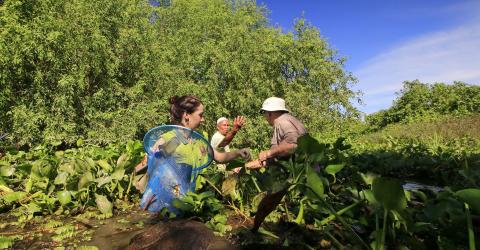
Management and Monitoring
How to implement management and monitor outcomes?
The range of activities required to effectively manage and monitor your Ramsar Site can be extremely diverse. However, these activities should always focus on what is needed to meet the objectives in your plan and ultimately to maintain the ecological character of the site.
Monitoring wetlands to meet management objectives
Alongside management activities, it is important to undertake activities related to the collection and management of information.
This could include surveys, surveillance and other forms of data gathering and recording. Typically, species and their habitats or physical and environmental variables are monitored through repeated surveys.
Monitoring should also cover important ecosystem components, processes, benefits and services that characterise your wetland.
Implementing management activities
Although the range of options and approaches to wetland management vary widely, the majority of activities fall into one of the following categories - water management, habitat management, species management, creation of zones, and the management of the multiple values of the site.
Preparedness for and responses to emergency situations (e.g. flooding, fire, disease outbreak) are another important component of management activities.
Guidance on how to implement management activities can be found at pages 37-44 of Wetlands Management Planning: A guide for Site Managers (the full document below)